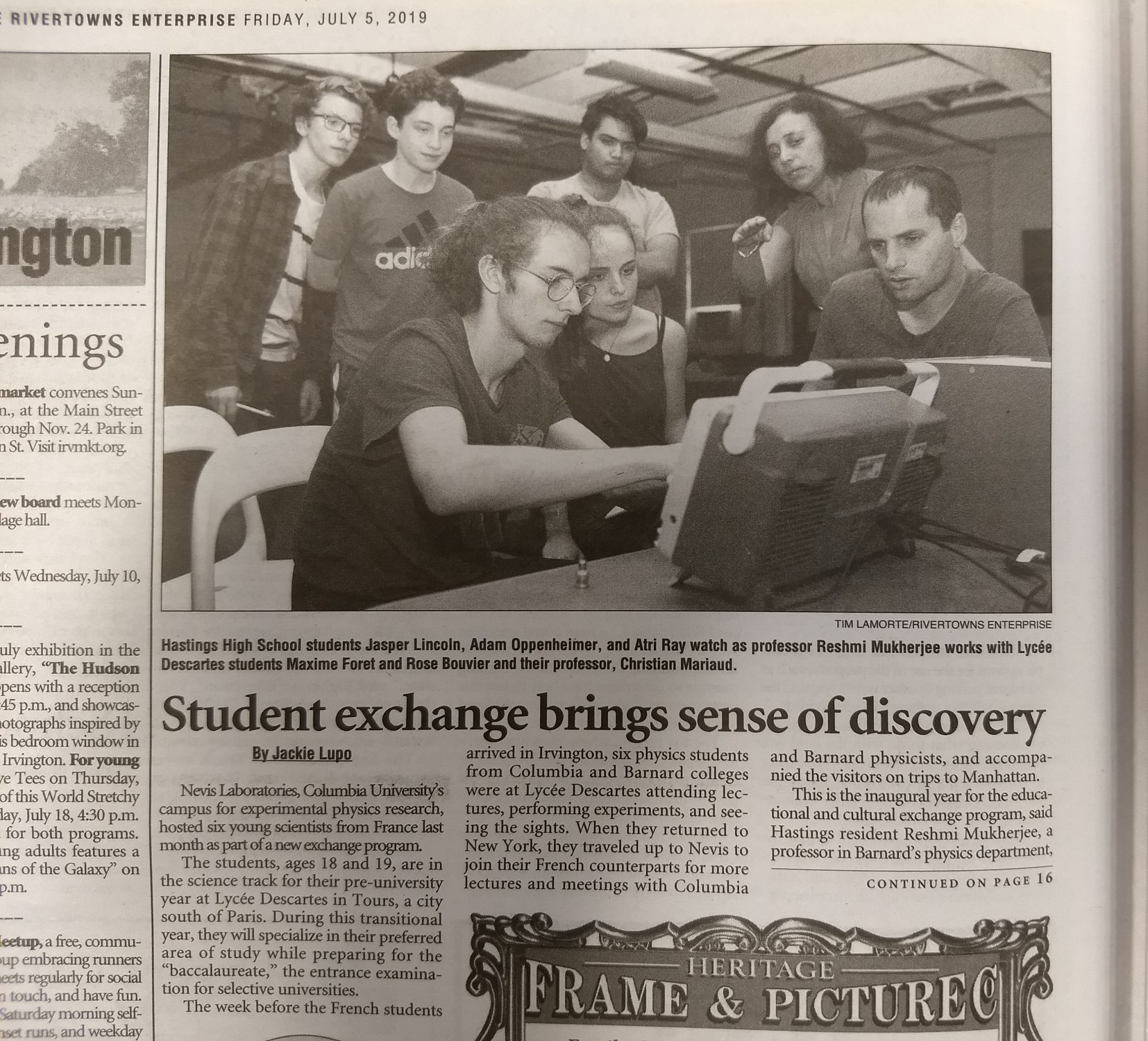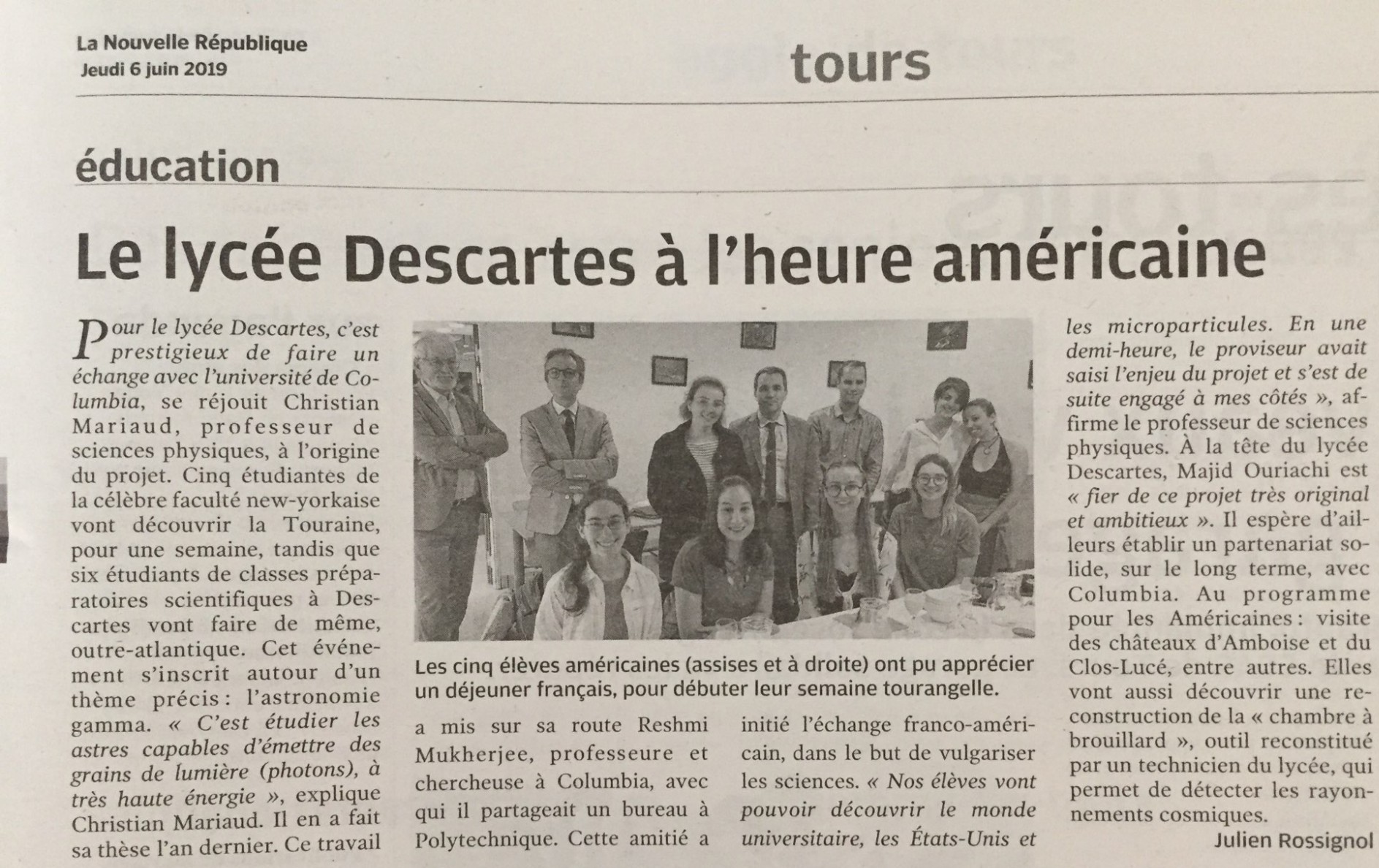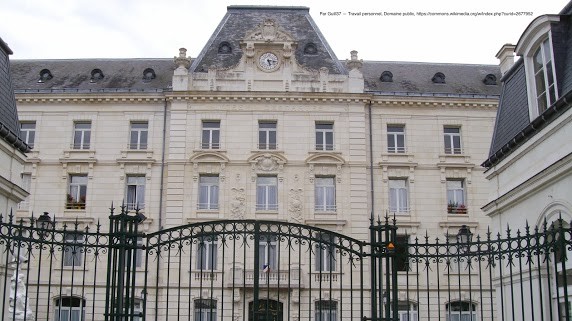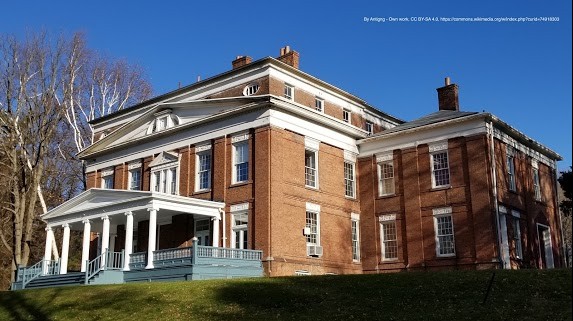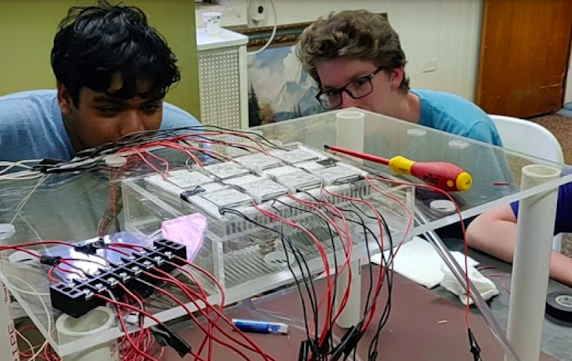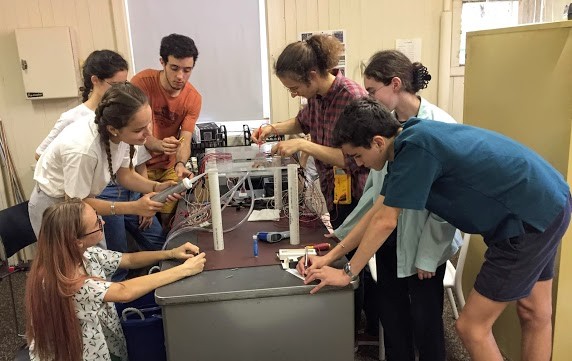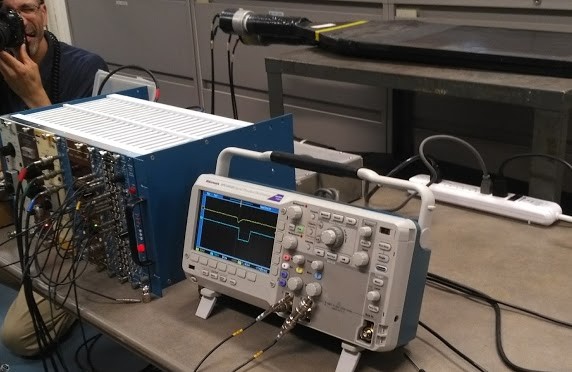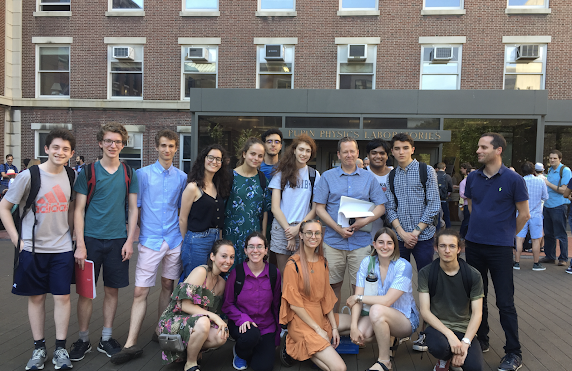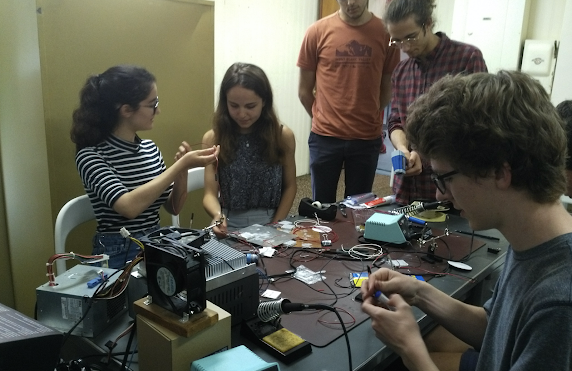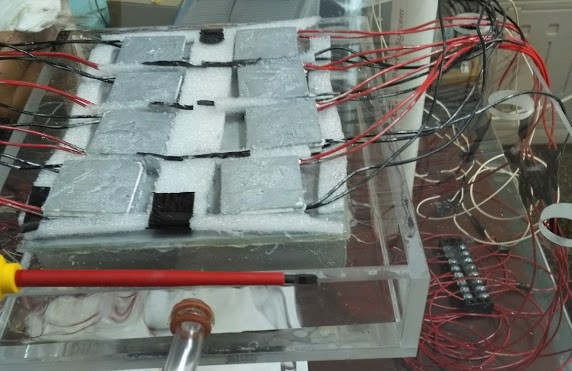APSS 2019
Summary
2019 was the inaugural year of the school which was designed for students from the United States, as well as French students from the Lycée Descartes in Tours, France. The goal was to give students a chance to exchange scientific ideas, set up potential scientific collaborations, and engage in cultural immersion. The school was coordinated by Professor Reshmi Mukherjee (member of the SCT and VERITAS Collaborations, USA) and Dr. Christian Mariaud (member of the H.E.S.S. Collaboration, France). The intention was to introduce students to astroparticle physics and very-high-energy gamma-ray astronomy. Unlike most other “summer” schools that are designed for graduate or advanced undergraduate levels, this school was aimed at first and second-year undergraduates and advanced high school students with a passion in science. In that sense, this school was conceptualized for the “novice” with the goal of potentially recruiting students for a STEM career pathway.
In the first year, the program included building a cloud chamber (using the Peltier effect), carrying out cosmic ray experiments such as measuring the lifetime of the muon, attending talks about particle astrophysics during a week-long stay in Tours, France or New York City. Topics discussed were cosmic rays, dark matter, compact objects, gravitational waves, binary systems, and gamma-ray astronomy. Visiting students toured laboratories, as well as explored the local area's history in science and astrophysics.
Dates
- 1-week in France (run by H.E.S.S. scientist Christian Mariaud): June 1-8
- 1-week at Barnard College and Nevis Labs, New York (run by pSCT and VERITAS scientist Reshmi Mukherjee): June 23-29
About the Program
This program brings together students from the United States and students from the Lycée Descartes in Tours, France to exchange scientific ideas, set up potential scientific collaborations, and engage in cultural immersion. The goal of this program is to introduce students to astroparticle physics and gamma-ray astronomy at very high energies using ground-based telescopes. The school is aimed at first and second-year undergraduates and advanced high school students with a passion in science.
In this program, students will design a cloud chamber (using the Peltier effect) and attend talks about particle astrophysics during a week long stay in Tours, France or New York City. Topics discussed will be cosmic rays, dark matter, compact objects, gravitational waves, binary systems, and gamma-ray astronomy. Visiting students will tour laboratories, as well as explore the local area's history in science and astrophysics.
Institutions
Experiments
Cloud Chamber
A cloud chamber is an early form of particle detector developed by C.T.R. Wilson in the early 1900's. Charged particles interact with the vapor in the chamber and create a trail of ionized particles. These ions then form a thin line of droplets which display a track of the particle's path. These different tracks change depending on the type of particle.
Cloud chambers played an important role in experimental particle physics from the 1920s to the 1950s, until the emergence of the bubble chamber. In particular, the discoveries of the positron in 1932 and the muon in 1936, both by Carl Anderson (awarded a Nobel Prize in Physics in 1936), used cloud chambers.
Here is a nice review of the contributions of the cloud chamber to physics: "A Report on the Wilson Cloud Chamber and its Applications in Physics". Reviews of Modern Physics. (1946).
Muon Lifetime
Muons are stopped in a large block of scintillator, where they subsequently decay into an electron (or positron) and two neutrinos. A short light pulse is produced by the stopping muon, and a subsequent short light pulse is produced by the electron (or positron), both of which are detected and amplified by a photomultiplier tube. By measuring the relative delay between these two light pulses from many muons, we can measure their lifetime.
Particle Astro Research
Members of the particle astrophysics group at Barnard College and Columbia University are involved in the development of a prototype Schwarzchild-Couder telescope (SCT) under construction at the Fred Lawerence Whipple Observatory, Arizona. Find a press release on the SCT inauguration here.
The development of the prototype SCT has been made possible by funding provided through the NSF-MRI program. The pSCT Collaboration consists of members from several institutions. Find a complete list of institutions here
Program Details in 2019
Tours Lycée Descartes Week
Five students from Barnard College, Columbia University participated in the week-long visit to Tours. Students viewed a demonstration of a cloud chamber at Lycée Descartes, and attended seminars at Reid Hall, Paris.
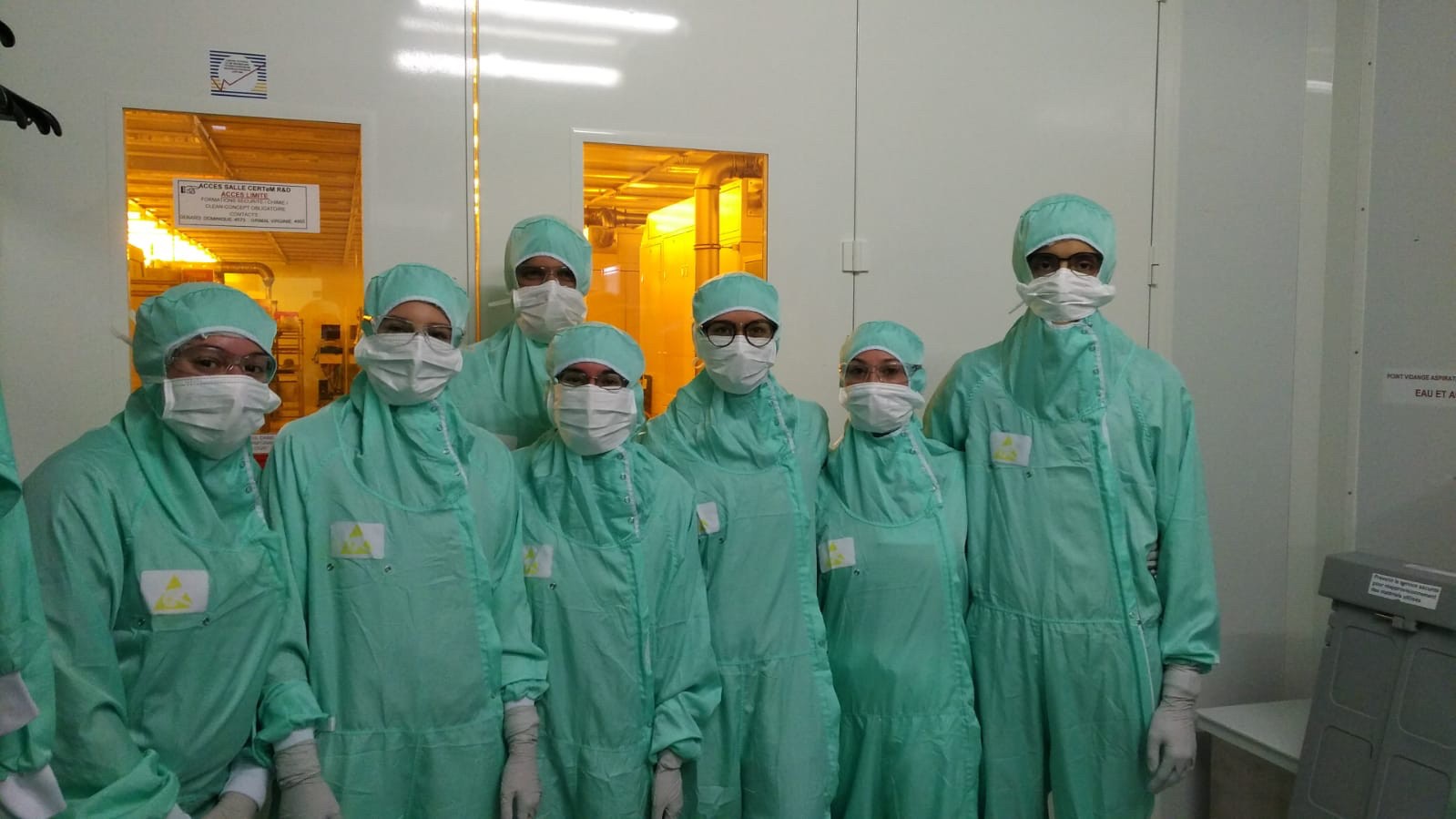
New York Week
- Location: Nevis Labs, Columbia University. Students stayed on site in the Nevis “Mansion” dorm.
- Number of days: 1 week
- Participation: 6 French high school students, 1 French teacher, 5 local high school students from the New York year (11th & 12thgraders), 4 Barnard undergraduates
- Activities: Daily lectures, hand-on experiments with cloud chamber building, working with oscilloscopes, scintillator/PMT set up, visiting labs at Nevis and on-campus at Columbia
Mentors and Lecturers
Mentors and teachers from pSCT who participated:
- Primary mentors: Prof. Reshmi Mukherjee and Dr. Qi Feng
Other mentors/lecturers:
- Colin Adams (Columbia)
- Dr. Olivier Hervet (UCSC)
- Dr. Brian Humensky (Currently, NASA)
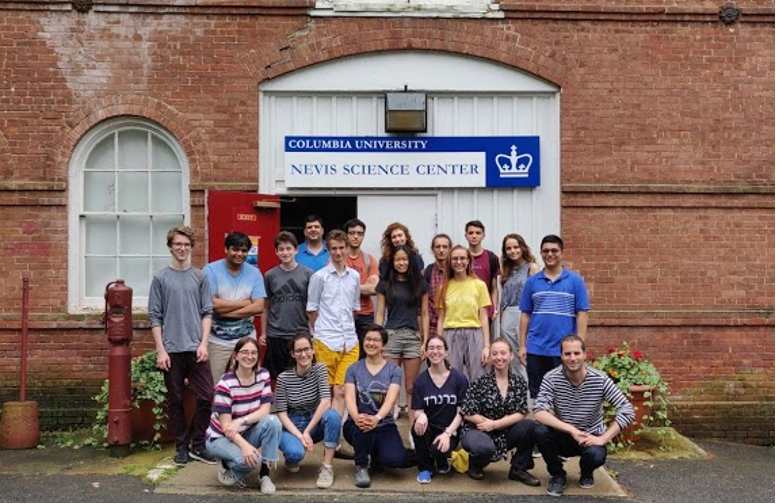
Student Presentations Nevis Labs, Columbia University, 28 June 2019
- Rose Bouvier (France, Lycée Descartes): Ice cube and neutrinos (jointly)
- Pierre d’Hebrail (France, Lycée Descartes)
- Paul Duruisseau (France, Lycée Descartes)
- Vivian Fang (New York, Trinity School)
- Maxime Forêt (France, Lycée Descartes): Is there anything bigger than the universe ?
- Andreas Ghosh (New York, Trinity School): Could we Detect Primordial Black Holes?
- Jasper Lincoln (New York, Hastings High School): Could naturally occurring Muons Be Used to Facilitate Cold Fusion?
- Adam Oppenheimer (New York, Hastings High School): Is String Theory an Explanation for matter in our Universe?
- Atri Ray (New York, Hastings High School): Is FTL Travel Possible?
- Damien-Joseph Rispal (France, Lycée Descartes): How to describe what we observe in space ?
- Alexandra Savino (New York, Irvington High School): Can we re examine previously analyzed VHE fluxes from M87 with the LAT?
- Fanette Séité (France, Lycée Descartes): Ice cube and neutrinos (jointly)
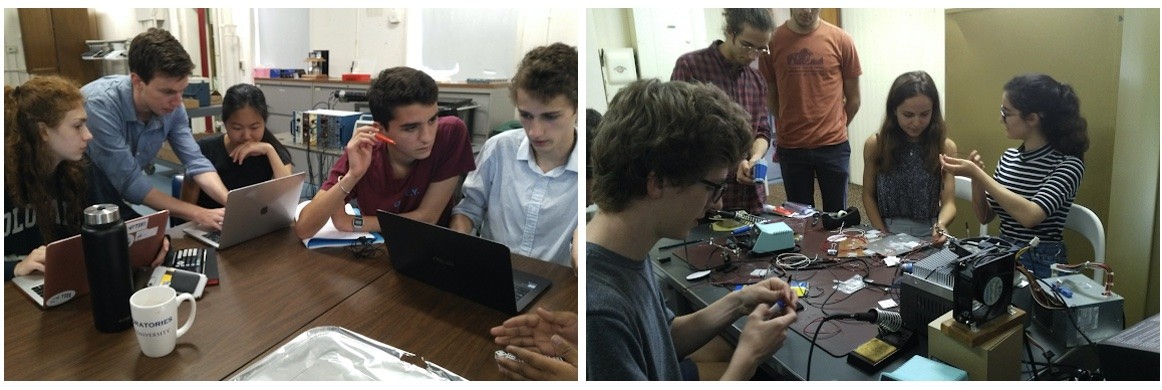
Columbia graduate student Colin Adam helps with computer programming to interpret the “Casino Dice” experiment. Right: Tours students, Fanette Séité and Rose Bouvier, working to help complete the cloud chamber build.
News Articles and Press
News articles in local newspapers in Tours, France and Rivertowns, New York.
